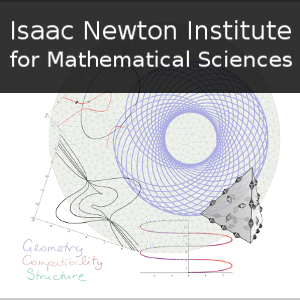Equivariance and structure preservation in numerical methods; some cases and viewpoints
53 mins 1 sec,
96.99 MB,
MP3
44100 Hz,
249.78 kbits/sec
Share this media item:
Embed this media item:
Embed this media item:
About this item

| Description: |
Owren, B
Wednesday 11th December 2019 - 15:05 to 15:50 |
|---|
| Created: | 2019-12-16 16:06 |
|---|---|
| Collection: | Geometry, compatibility and structure preservation in computational differential equations |
| Publisher: | Isaac Newton Institute |
| Copyright: | Owren, B |
| Language: | eng (English) |
| Distribution: |
World
|
| Explicit content: | No |
| Aspect Ratio: | 16:9 |
| Screencast: | No |
| Bumper: | UCS Default |
| Trailer: | UCS Default |
| Abstract: | Our point of departure is the situation when there is a group of transformations acting both on our problem space and on the space in which our computations are produced. Equivariance happens when the map from the problem space to the computation space, i.e. our numerical method, commutes with the group action. This is a rather general and vague definition, but we shall make it precise and consider a few concrete examples in the talk. In some cases, the equivariance property is natural, in other cases it is something that we want to impose in the numerical method in order to obtain computational schemes with certain desired structure preserving qualities. Many of the examples we present will be related to the numerical solution of differential equations and we may also present some recent examples from artificial neural networks and discrete integrable systems. This is work in progress and it summarises some of the ideas the speaker has been discussing with other participants this autumn.
|
|---|---|
Available Formats
| Format | Quality | Bitrate | Size | |||
|---|---|---|---|---|---|---|
| MPEG-4 Video | 640x360 | 1.9 Mbits/sec | 758.66 MB | View | Download | |
| WebM | 640x360 | 683.86 kbits/sec | 265.38 MB | View | Download | |
| iPod Video | 480x270 | 488.9 kbits/sec | 189.67 MB | View | Download | |
| MP3 * | 44100 Hz | 249.78 kbits/sec | 96.99 MB | Listen | Download | |
| Auto | (Allows browser to choose a format it supports) | |||||

